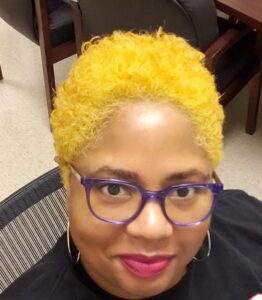The old adage goes “sticks and stones may break my bones, but words will never hurt me.” Growing up, I believed this wholeheartedly.
I had to believe it so I could believe less in the nicknames given to me by some family members, teachers, and grade-school friends: scatterbrained, clumsy, forgetful, danger-prone, lazy, disorganized, unfocused, messy, and motormouth, as well as the general sentiment that I wouldn’t know where my head was if it wasn’t attached to my body.
Years later, I know how much language matters and words shape thoughts and actions. My family, friends and teachers weren’t describing a funny quirk about me: they were describing the neurobiological disorder I was diagnosed with as an adult in 2012.
As someone diagnosed with Attention-Deficit/Hyperactivity Disorder, commonly referred to as ADHD, I didn’t receive the health and educational support I needed to thrive. Everyday, I navigate the challenges of living with ADHD. What exacerbates the challenge is navigating ADHD in communities of color and, for our children, in classrooms.
I want my daughter, who also has the same diagnosis, to have a vastly different experience in her community and school than I did. We must ensure that communities — especially communities of color — and schools have what they need to ensure those with neurobiological and/or mental health diagnoses feel supported and safe.
Communities of Color
Research has shown that there is disproportionate treatment of healthcare, especially mental health care, across race and ethnicity. Despite showing symptoms at the same rate, children of color are much less likely to be diagnosed and treated for ADHD in comparison to their white counterparts. In our community, there is a tendency to label our children as “bad” and in need of more discipline, instead of addressing any possible neurobiological or mental disorders. There can also be a complete rejection of ADHD altogether.
If communities of color can persevere through overt and implicit systems of oppression then we assume we can surely begin to address mental health issues in ourselves and in our children. But it’s okay to ask for help. We need a new cultural norm where we address the mental health component as a part of our overall wellness and not sweep issues under the rug and pretend like they don’t exist. Of course, the responsibility isn’t just in our communities, the medical community must earn our trust through cultural competence and cultural humility.
Our Schools
Schools can help students and their families feel welcome and supported.
First, school staff need to educate themselves on neurobiological health disorders, like ADHD, to avoid sweeping generalizations, such as “everyone with ADHD is hyperactive,” which labels those with ADHD as “all of this” or “all of that.” When teachers are presented with a 504 plan or an IEP, they should take time to do some reading about it, work with the Special Education Coordinator to identify resources, and have a conversation with the parent to get more information about how that student can be supported in school. A great place to start reading is on the Children and Adults with Attention-Deficit/Hyperactivity Disorder (CHADD) website. Staff should also have access to a social emotional learning curriculum so they can converse with students and their families using asset-based language will empower students and build confidence.
Second, many students with ADHD and other disorders may have comorbid conditions — or more than one disorder. For example, anxiety and depression can often accompany ADHD. Acknowledge that students’ experiences can be compounded and they may need extra time and support.
Third, we need to ensure that there are a sufficient number of trained mental health staff in schools so that students are served both proactively and responsively. Right now, and especially in light of the global pandemic, we need to double down on our support of our students and staff mental health. That means dramatically increases the number of trained experts in schools.
While I have to work everyday to make sure my daughter is supported, I’ve been able to ensure she walks a different path than I did. We need to make sure that every child has that opportunity to thrive. With these changes, we can achieve that.
By Shayne Swift, Ward 4 parent leader


